A common complaint from those who are minoritised in certain domains of life, such as work, feel that their minoritised identity receives too much emphasis. Philosophers who are women might complain that they are seen as women before they are seen as philosophers. Artists who are Black might object to being called ‘Black artists’ in reviews of their work, while fellow white artists do not have their race made salient. How should we understand complaints like these? Ella Whiteley explores the ethics of social identity salience.
Experiences in the discipline
I remember feeling the irony of joining a Woman in Philosophy group during my doctorate, while wanting not to be seen as a woman in philosophy. Colleagues who were men weren’t men in philosophy. They were philosophers. I wanted to be a philosopher too. Well, to be more accurate: sometimes I didn’t mind being a woman—I just didn’t want my gender to receive some sort of special emphasis. At least, not in the majority of contexts in which I was being a philosopher. In departmental meetings, conferences, teaching allocation, my participation in the peer review system—it did not seem appropriate for my gender to be emphasised there, particularly when men weren’t having their gender made salient.
I’ve fortunately had mostly good experiences in the profession so far. My time at the LSE in particular has been hugely enjoyable. I have (and have had) many wonderful colleagues, have met many excellent people at conferences, and have largely felt valued and respected in my places of work. Some have supported and mentored me in such caring and dedicated ways that I know I will never be able to thank them sufficiently. But I’ve also had a range of negative experiences, which relate specifically to my gender. One fits straightforwardly in the category of sexual harassment—an experience that, for a few years, substantially affected my feeling of safety, as well as desire to be, in the profession. Many others, though, were much more subtle. The problem was harder to pinpoint and articulate. Some instances did not even seem particularly or obviously bad. It might be someone introducing me as a feminist philosopher, which was not my most central area of research. It might be someone appearing to remember the parts of our conversation that had to do with gender, and forgetting or remembering less the parts that had to do with the philosophy of biology. It might be recognising how a certain colleague asked me more personal questions than he seemed to ask colleagues who were men—the latter being solicited more often for their philosophical thoughts. It might be uncomfortable eye contact. While varied and potentially explainable in a range of ways, to me these experiences stemmed from the heightened salience my gender seemed to have for these individuals—a salience that, in those contexts, felt undue.
Returning to the Women in Philosophy group, then, perhaps I allowed for my gender to be made salient there because it felt appropriate to that context. My womanness was at least relevant to the group’s scope and mission. I’d still cringe a little at the name of the group – I’d worry it essentialised women, created odd and potentially unhelpful barriers between minoritised social groups that might otherwise unite to overcome their marginalisation and mistreatment in the discipline, etc. – but as for my gender being emphasised, I could swallow that (even if it still made me a little uncomfortable).
I’ve spoken to various people who are minoritised in the discipline about their experiences since – both colleagues and students – who are supremely conscious of how others look and think about them as a philosopher or otherwise. One striking theme I noticed was how these individuals resisted, or otherwise thought a great deal about, studying the type of philosophy that touched on their marginalised social identity properties. A student of mine from Singapore commented on how they worried about researching issues regarding nationality, race, and ethnicity; focussing on this area risked confirming and entrenching the very framing of them that they wanted to avoid—that research focus, against their will, seemed to justify the perception of them as Singaporean first, philosopher second. I have heard very similar concerns from other colleagues.
Minoritised in the workplace: other testimonies
Hearing these worries made me think of a quote from Basquiat: “I am not a Black Artist. I am an artist”.[i] This succinctly captures Basquiat’s frustration with how he was perceived in the art world. The issue he raised is one analysed by Griselda Pollock and Rozsika Parker in their seminal text Old Mistresses.[ii] Pollock and Parker drew attention to the routine way in which artists from marginalised backgrounds are seen primarily in terms of their gender, sexuality, race, ethnicity, nationality, and so on. While a white artist is simply an ‘artist’ in a review of their work, an artist who is Hispanic will routinely have their ethnic moniker placed first: their reviews refer to a ‘Hispanic artist’.
I then came across Zoe Kravitz’s response to Basquiat’s quote. “Happy to be Black. Just don’t need to say it in front of everything”.[iii] I found this fascinating. It seemed to imply that the issue wasn’t always just being seen in terms of one’s (perceived) racial or ethnic identity per se, but rather where that identity takes precedence over one’s other identities. Kravitz’ quote indicated that the issue had something to do with the order and structure of social identity traits in language, where some came before others.
So, I turned to what I could find online, looking for testimonies from marginalised individuals that also seemed to gesture at the ordering and structuring of a person’s attributes. I’d look through peer-reviewed articles on the experience of racially minoritised individuals in STEM, blogs dedicated to the testimony of women in philosophy, newspaper articles compiling reader experiences with how others perceived their disability, and so on. There, I found a wealth of examples of complaints that one was ‘first and foremost disabled’, ‘a Black person first, a philosopher second’, and so on. One quote from physicist Helen Mason, interviewed for an article on women in science, matched Kravitz’ complaint most directly, without cashing things out in terms of language. Complaining about how others perceived her primarily as a woman, Mason articulated her preferred framing as this: “I am first and foremost a scientist, but of course I am also a woman.”[iv] To me, Mason could be read as saying that she was happy to be a woman in professional contexts. We just don’t need to make it more salient than her identity as a scientist.
The philosophy of salience and attention
I wanted to get a more precise grip on what was going on. What does it mean for a trait to be salient? A common answer here is that it is attention-grabbing. So, talking about salience often means talking about attention. Indeed, attention is often discussed in organisational and structural ways. Sebastian Watzl refers to attention as the regulation of “priority structures” in the mind, capturing how the contents of our attentional field are ordered from most salient – i.e. central in one’s conscious field – to least salient—i.e. falling to the periphery.[v] Imagine listening to a song playing through your computer speakers. That’s not the only content in your conscious awareness; peripherally you’re aware of an itch on your leg, your thoughts about an impending work deadline, the smell of coffee in your kitchen, alongside various other things. But it’s the song that stands out to you. Elizabeth Camp says that something is salient in one’s attention when “it sticks out relative to the background, like a bright light or a hugely bulbous nose”.[vi] Watzl also talks in terms of a signal-to-noise ratio; the thing that is salient to you is generally clearer and more defined (visually, aurally, cognitively, etc.), and ends up being more likely to be thought about and remembered, among other things.
In the philosophy of attention and salience, then, I started to find tools that could help to capture the anecdotes and testimonies I had compiled. A worry that one is black first and an artist second might be understood as a claim that one’s blackness is central in the attention of others – i.e. top of their ‘priority structure’ – while one’s identity as artist is more peripheral—i.e. lower down their priority structure. The complaint might be that what ought to be more peripheral is central, and what ought to be central, peripheral.
But there were differences between the anecdotes that I was finding online that implied a finer-grained categorisation of attentional pattern than the existing literature could account for. For instance, sometimes individuals seemed to complain about something quite extreme. Some felt their professional accomplishments were being ignored, while their disability, for instance, was almost fixated upon. As an example of the latter, a social worker with cerebral palsy compared his experience of being disabled to being a celebrity: “Because being famous – I assume without being famous myself – means that you receive a high level of attention whether you like it or not and in every possible situation.”.[vii]
Other anecdotes, though – including those introduced in this discussion so far – felt like they were referring to something subtler. One blog post by an anonymous philosopher said this: “you [philosophers who are women] will always end up philosophically on the subject of your gender simply because you will be seen as a woman first and a philosopher second.”[viii] By saying ‘philosopher second’, I understood this person to imply that their status as a philosopher was not being ignored. It was just relatively lower on others’ priority structures, so to speak, while their gender was relatively higher.
Relative attentional surpluses
On the basis of the differences in testimonies like these, I decided to distinguish ‘absolute’ forms of attentional surplus and deficit – calling them attentional fixations and omissions respectively – from their ‘relative’ counterparts. The latter captured cases where, instead of something critical being ignored, or the wrong thing being fixated upon, the relative levels of two or more attentional contents were wrong in some way—the wrong thing was higher up than the right thing in another’s priority structure.
What more precisely was wrong about the relative attentional surpluses described? For one thing, I could imagine various potential negative causal effects that these attentional patterns might generate; having one’s gender more salient than one’s philosophical achievements, for instance, could no doubt hurt one’s career. But there was also something about the attentional patterns themselves that felt morally problematic, leaving aside these potential negative consequences. In the professional contexts in which the individuals were speaking, their gender, race, disability and so on, did not seem particularly meaningful. These demographic properties distracted from more important things. More important in what sense?
Well, consider how, across the variations in the testimonies, the individuals reoriented others’ attention to their careers, passions, or simply existence as a person. To me, this wasn’t surprising. These are all things that these individuals had chosen and exercised control over. They were things in which those individuals had demonstrated their skills and reason, and cultivated their individuality. As such, they highlighted these individuals’ personhood. To be recognised as an agent with personhood is to be recognised as having traits like rationality, a capacity to set and pursue one’s own ends, individuality, integrity and personality. An idea with a long history in philosophy is the idea that we have a fundamental moral obligation to respect others’ personhood, and that we wrong a person whenever we disrespect that personhood.[ix] It seemed to me that attentional patterns can count as subtle ways of respecting, or disrespecting personhood. Selectively prioritising in attention traits that do not reflect personhood – which, in the contexts considered here include demographic properties – over those that do – which, in the contexts considered here include professional identities and passions – is a particularly minimal, subtle way of disrespecting an individual’s personhood. And that is morally bad in itself.
Overhanging questions
I discuss these issues in a new paper, Woman First and Philosopher Second: Relative Attentional Surplus, which is available open-access in Ethics. There are many other questions that I consider there. For instance, how do we account for a CEO who wants for their Blackness to be their most salient feature? Is a person’s gender an inherently non-personhood-related trait? How do these relative attentional surpluses on the wrong property fit with the attentional deficits that marginalised individuals are routinely said to face in their professional life, as well as in society more broadly, insofar as these individuals and their contributions are so regularly ignored? When we compare them to much more egregious instances of sexism, racism and ableism in the workplace, don’t these relative attentional surpluses reveal themselves as morally insignificant?
Instead of expanding on my answers to those questions here, I want to end by considering one avenue that I did not have time to consider, but that I believe would be worthwhile to investigate. What happens, exactly, to individuals who (have to) navigate problematic patterns of attention? Consider the student I mentioned, who was worried about focussing on research relating to nationality lest this further enable a likely perception of her as Singaporean first, philosopher second. Or consider another example, if you’ll permit me to recount one more anecdote. At a conference a couple of years ago, I chose to wear a skirt to my talk, as had a fellow speaker. We went for a lunch together after our panel. Quite quickly, we confided in each other that our respective sartorial decisions had – much to our embarrassment and frustration – cost us some real deliberation earlier that morning. It was hot, and we both felt that a skirt was the most comfortable choice. But we were very aware of the risks of this outfit. The conference was a predominantly male space, and gendered conventions for men dictate trousers or shorts. A skirt could make us stand out in such a room, and specifically in a way that marked us as women. Part of this was a concern that the salience of our gender might evoke various prevalent associations with womanness, both those specific to the discipline (that women are not philosophers, stereotypically-speaking), and those relating to wider cultural narratives (i.e. that women are most worthy in terms of their beauty, and so on.). But more broadly, we just did not want our gender to be salient at this conference.
Attentional patterns and invisible labour
Of course, not all women in philosophy think hard or worry about their clothes choices. Not all Singaporean students in the UK think hard or worry about their research area touching on issues that relate to nationality. But those who are marginalised in their workplace (and other domains of life) will likely go through some extra processes of deliberation that involve grappling with the common patterns of attention on them—patterns that position them as first and foremost women, Black, disabled, and so on. And that process of deliberation is costly. It takes time and mental and emotional effort. It counts as what scholars would call ‘invisible labour’, loosely referring to activities performed that are hidden, un(der)paid, and un(der)valued. The particular form this invisible labour takes is what Devon Carbado and Mitu Gulati call “identity work”.[x] This captures the process of creating, maintaining and changing one’s identity in social interaction. More specifically, it refers to the (conscious and unconscious) thought processes and physical behaviours performed by marginalised individuals when confronted with sexism, racism, heteronormativity, and other structures of oppression in their workplace. These thought processes and subtle actions are geared to emulate the behaviour of privileged folk, counter stereotypes, demonstrate soft skills, help those who are in privileged to feel comfortable and/or powerful, and so on.
This is one difference between those with a given privilege and those without it. As a white woman with a British accent who works in the UK, for instance, I am protected from a range of time-consuming, effortful, and emotionally- and psychologically-taxing thought processes and behaviours, which relate to how my presentation shapes the attentional patterns of others. I do not have to spend time thinking about whether my accent or hairstyle will encourage others to attend excessively to my race, ethnicity, or nationality. When pushing back against a view in a departmental meeting, or against the speaker in a Q&A session of a talk, I do not have to consider if my race will be made salient—a risk that emerges for Black women in virtue of the ‘angry Black woman’ stereotype, which paints negative emotion expressed by such an individual as indicating her aggressive, out-of-control nature.[xi] Furthermore, I can then spend the time and effort I save there on other more valuable (financially, symbolically, etc.) activities, whether that is relaxation, research, or something else. I save myself from certain types of psychological and emotional stress.
One line of research, then, would investigate what more precisely is involved in the invisible labour undertaken when navigating problematic attentional patterns. If those from marginalised groups disproportionately shoulder the burden of such labour, how does this contribute to inequalities in the workplace? What is a marginalised individual supposed to do, practically- and prudentially-speaking, in a world of unfriendly attentional patterns on them? Would they be wise to avoid picking a research topic that touches on their demographic properties? Is there a way of mitigating against the risk of entrenching the already ‘othering’ attentional patterns one faces, if one does end up selecting such a research topic? These questions feel particularly salient to me; in writing about wanting to be attended to as a philosopher first, woman second, I realise that, ironically, I risk inviting exactly the opposite.
By Ella Whiteley
Dr Ella Whiteley is currently a Fellow at LSE Philosophy. In September, she’ll be joining Sheffield University as a permanent lecturer in the Sheffield Methods Institute.
About this blog article: This article has also been published on the ‘New Work in Philosophy’ substack.
Notes
[i] Jean-Michel Basquiat, quoted in Dieter Buchhart and Tricia Laughlin Bloom, Basquiat: The Unknown Notebooks (New York: Brooklyn Museum, 2015), 20.
[ii] Rozsika Parker and Griselda Pollock, Old Mistresses: Women, Art, and Ideology (London: Routledge & Kegan, 1981), xix.
[iii] Zoe Kravitz, quoted in Kiersten Willis, “Zoe Kravitz Responds to Criticism over ‘I Am Not a Black Artist’ Image by Proclaiming ‘#ArtIsArt,’” Atlanta Black Star, July 16, 2017, https://atlantablackstar.com/2017/07/16/zoe-kravitz-responds-criticism-not-black-artist-image-proclaiming-artisart/.
[iv] Helen Mason, quoted in Science Careers Staff, “Celebrating Women in Science,” Science, February 9, 2018, https://www.sciencemag.org/careers/2018/02/celebrating-women-science.
[v] Sebastian Watzl, Structuring Mind (Oxford: Oxford University, 2017).
[vi] Elizabeth Camp, (“Perspectives in Imaginative Engagement with Fiction,” Philosophical Perspectives 31 (2017): 73–102, 80.
[vii] Nanna Mik-Meyer, “Othering, Ableism and Disability: A Discursive Analysis of Co-workers’ Construction of Colleagues with Visible Impairments,” Human Relations 69 (2016): 1341–63, 1342.
[viii] Anonymous, “Women in Philosophy,” Soycrates (blog), 2015, https://soycrates.tumblr.com/post/106289289268/i-went-into-philosophy-thinking-that-it-would-be.
[ix] Robin S. Dillon, “Respect,” in The Stanford Encyclopedia of Philosophy, ed. Edward N. Zalta (Stanford, CA: Stanford University, 2018).
[x] Devon Carbado and Mitu Gulati, “Working Identity,” Cornell Law Review 85 (1999): 1259-1308.
[xi] Nadena Doharty, “The ‘angry Black woman’ as intellectual bondage: Being strategically emotional on the academic plantation,” Race, Ethnicity and Education (2019) 1-15.
Further Reading
- Rebecca Buxton and Lisa Whiting, “Women or Philosophers?,” Philosophers Mag, February 4, 2021, philosophersmag.com/essays/230-women-or-philosophers.
- Elizabeth Camp (“Perspectives in Imaginative Engagement with Fiction,” Philosophical Perspectives 31 (2017): 73–102, 80.
- Georgi Gardiner, “Attunement: On the Cognitive Virtues of Attention,” in Social Virtue Epistemology, ed. Mark Alfano, Colin Klein, and Jeroen de Ridder (New York: Routledge), 48–72.
- Jessie Munton, “Prejudice as the Misattribution of Salience,” Analytic Philosophy 64 (2023): 1–19.
- Susanna Siegel, The Rationality of Perception(New York: Oxford University Press, 2017).
- Sebastian Watzl, Structuring Mind (Oxford: Oxford University, 2017).
- “The Ethics of Attention: An Argument and a Framework,” in Salience: A Philosophical Inquiry, ed. Sophie Archer (Oxon: Routledge, 2022).
- Ella Whiteley, “Harmful Salience Perspectives,” in Salience: A Philosophical Inquiry, ed. Sophie Archer (Oxon: Routledge, 2022), 193–212.










































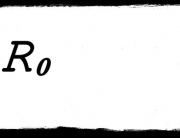

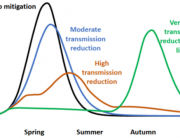


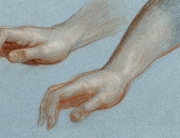




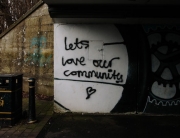





























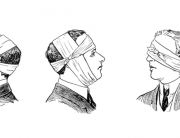





























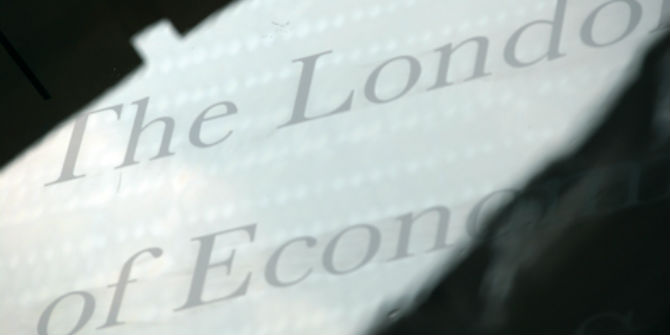











Connect with us
Facebook
Twitter
Youtube
Flickr